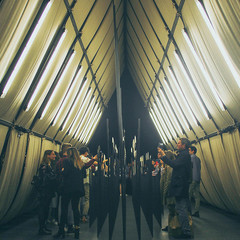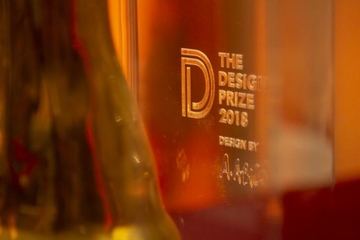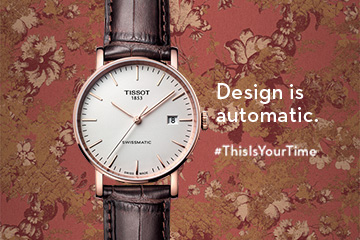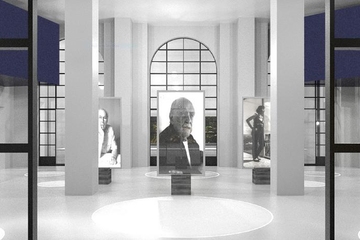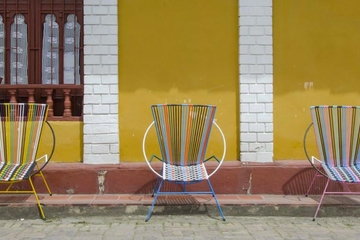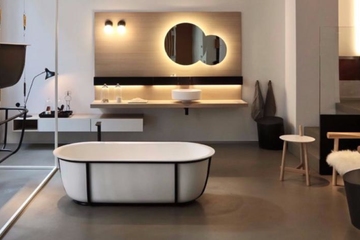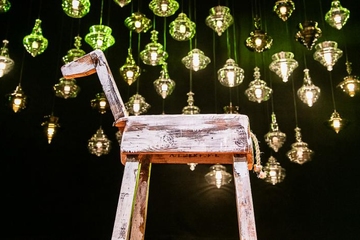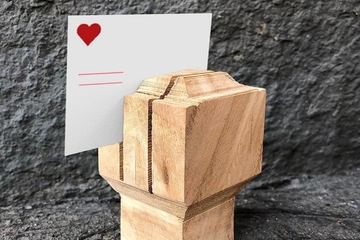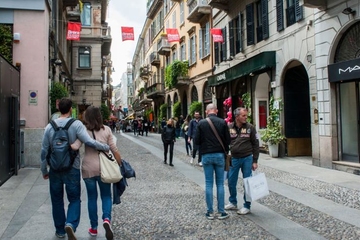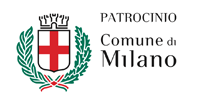"La nostra Arca raccoglie oggetti diversi, di dimensioni e fogge diverse, realizzati con tecniche diverse e vogliamo, con questa creativa convivenza, con questa eterogeneità che nell’insieme e nella coralità regala un effetto di grande armonia, dare un messaggio di uguaglianza nelle differenze e di pace per il futuro."
Ark & Craft - Creative Academy | Contemporary design on ceramic is an installation that wants to express the philosophy of the school through a series of symbols, on the occasion of the 15th anniversary of the Richemont Group Corporate School.
The inspiration comes from the Noah's Ark, from the universal deluge and from the consequent rebirth to life, which is a narration that is present not only in Genesis, but in very similar forms in all cultures: it represents a universal topos, which belongs to all humanity. This is a fundamental value not only for the school, which has welcomed students from all over the world for 15 years, but also for the city of Milan, which has become a melting pot of cultures and nationalities and Creative Academy has chosen as a location for its installation is a symbolic place for Milan and for Design: the Triennale garden in Milan, next to the Mysterious Baths of De Chirico.
Creative Academy shares with Fondazione Cologni dei Mestieri d'Arte, partner of the project, a fundamental and founding value for the installation Ark & Craft, that is the idea of a New Renaissance of the Intelligence of the Hand: the promotion of the artisan excellence not only as a cultural heritage of great importance for our city and for our country, but also as a great job opportunity for the young generations.
Another element that we think is important is the concrete transmission of the Arts Crafts to the new generations: our project is the result of the collaboration between our young international designers and the Paravicini Laboratory, a historic Milanese company of excellence in ceramic painting. The projects realized were born from the dialogue with the Art Masters, Costanza Paravicini and Benedetta Medici, a dialogue that is not just a conversation between the minds, but also in the hands.
We interviewed Franco Cologni, Creative Academy Chairman, about it:
Why use the symbol of Noah’s Ark to represent contemporary design?
Who better than I may play Noah? Jokes aside, the biblical Ark gathered the best of living creatures leaving behind all that was negative, to create a new order, a more pure and ethical world. It symbolises a journey towards a better planet and this is also the mission of design, it has always been so: bringing beauty into daily objects and making the world we live in a better place with harmony and creativity.
Furthermore, in our installation the Ark stands for multiple values, first and foremost that of Creative Academy, design school of the Richemont group. Since 15 years the Academy has been guiding young international designers from the status of students to that of young professionals in the luxury industries: a hard and exciting journey for all of them, projecting them into the future and laying the bases of their careers.
However, the Ark also means concern for social issues and sustainability: the safety of animals as a symbol of the need to protect and preserve the various cultural heritages and the great handicraft excellence, that are at risk of being lost if we don’t work all together to make them settle in the contemporary world.
This is a goal that Fondazione Cologni dei Mestieri d’Arte has always shared with Creative Academy: every year we carry out a project developed by young designers together with an art master. And when I say “developed together” I literally mean it: the concept for which designers create and artisans execute is now obsolete, the common efforts of four hands and two brains are essential to achieve real excellence.
Creative Academy highlights the importance of this also in the title of its Master, that is Master of Arts in Design and Applied Arts: design and applied arts, the excellence of handicrafts, can only go hand in hand, working side by side.
How can technology and handicraft work together to give life to the New Renaissance of the intelligence of hands that you mention in your press release?
I am really sorry that handicraft excellence and technology are commonly regarded as two opposite poles: one of our goals is exactly to show that old and contemporary are not in contrast, but rather live together in a dialogue that brings both of them a mutual benefit.
Know-how can and must be supported by technology not only in terms of technique, but also of communication, that today is necessarily digital.
What really matters is that men, human beings are at the centre: their smartness, their ability, their talent and capability to innovate with beauty.
From your perspective, what is the key element to deeply communicate the importance of handicraft quality to the new generations of designers?
If I have to tell the truth, communicating to the new generations of designers the excellence of Art Masters is very simple: given their creativity, their sensitivity and sharing the love and passion for the creation of objects, these two figures can easily understand each other and young designers can immediately catch the special nature of Masters and the wonderful beauty of their products. In today’s society, crowded with ugly, obsolescent, mass-produced objects, as a reaction to that the young love customisation and non-conventional, different, special things: and these are all elements inherent to the craftsmanship production.
Besides, young designers know they can learn from the dialogue between hands and brains and that the relationship with makers is essential for those who design to understand the limits, the technical manufacturing constraints; to create together objects that symbolise the old and the contemporary in a perfect expressive blending.
Unfortunately, what has not been done throughout history was to give equal relevance and visibility to designers and masters: this is exactly what we are trying to change, “showing” Art Masters, bringing them outside of their ateliers, their workshops, and helping them become ambassadors of themselves, just as much as designers. And I make no secret that this is a very hard task, also because Masters like creating better than showing off, they like letting their creations talk for themselves rather than talking about themselves: but this is a small, slow yet relentless revolution of which future designers will be standard-bearers.
© Fuorisalone.it — All rights reserved.







